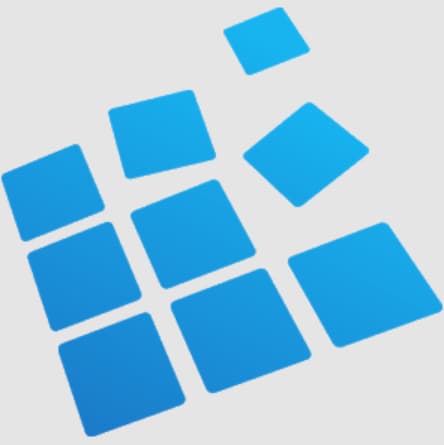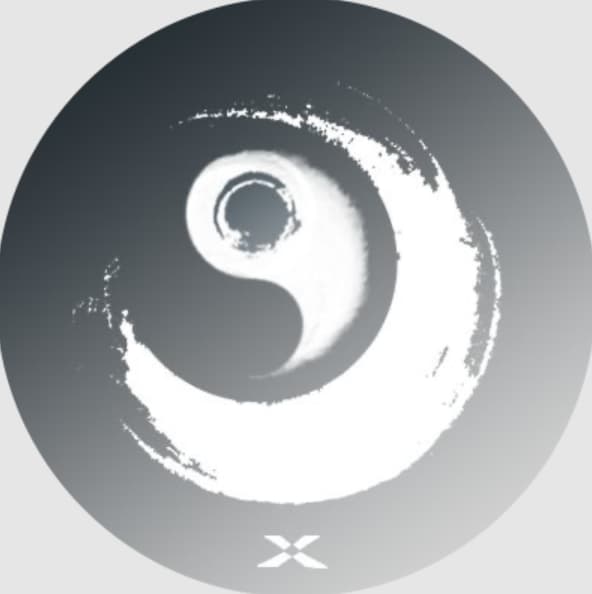Are you excited to start your triathlon journey but feeling a bit overwhelmed? Don’t worry, you’re not alone! Triathlon training can seem daunting, especially for beginners.
But here’s the good news: there are plenty of amazing apps out there to help guide you every step (or swim, bike, and run) of the way.
In this article, we’ll introduce you to the 9 best triathlon training apps that are perfect for beginners like you.
These apps will be your virtual coaches, helping you conquer your first sprint triathlon or even tackle a more challenging IRONMAN event.
We know that getting started can be intimidating, so we’ve made the process as simple as possible.
Best Triathlon Training Apps For Beginners 2024

We’ll take a close look at each app, covering its features, ease of use, and how well it suits beginner triathletes.
So join us on this exciting adventure as we discover the top apps to train with and make your triathlon dreams a reality.
Let’s get started and find the perfect app to help you cross that finish line with a huge smile on your face!
What to Look for in a Triathlon Training App?
Before we dive into our top picks, let’s talk about what factors you should consider when choosing a triathlon training app:
- Your fitness level and experience: Are you brand new to triathlons or do you have some background in running, cycling, or swimming? Look for an app that matches where you’re starting from.
- Your training goals: What’s motivating you to do a triathlon? Is it just to finish your first race or are you aiming to hit a certain time? Choose an app that aligns with your ambitions.
- Your budget: Triathlon apps come at various price points. Keep your budget in mind, but also remember that many apps offer free trials so you can test them out first.
- Features you need: Do you want an app with structured training plans or one that tracks your workouts in real time? Think about which features matter most to you.
- Device compatibility: Make sure the app works with your smartphone, whether you’re an iPhone or Android user.
- Community and support: Some apps have built-in communities where you can connect with other triathletes for extra motivation and advice.
- Ease of use: You want an app that’s straightforward and user-friendly, not one that leaves you confused.
Now that you know what to look for, let’s check out the 9 best triathlon training apps for beginners in 2024!
Top 9 Triathlon Training Apps for Beginners
Here’s our roundup of the best triathlon apps to help you swim, bike, and run your way to success:
| App Name | Key Features | Pricing |
|---|---|---|
| TrainingPeaks | 200+ training plans, workout tracking, performance analysis, coaching | $19.95/month (Premium) |
| Strava | GPS tracking, performance metrics, customizable training plans, social features | Free (Basic), $7.99/month (Summit) |
| MOTTIV | Personalized plans, real-time tracking, progress insights, community | $5.49/month |
| TrainerRoad | Adaptive training, 2000+ workouts, real-time feedback, community support | $19.95/month |
| IRONMAN Tracker | Official IRONMAN plans, tracking, community, and race day support | Free |
| ASICS Runkeeper | GPS tracking, audio coaching, custom workouts, community | Free (Basic), $9.99/month (Go) |
| Cyclemeter | GPS ride tracking, custom data display, interval tracking, live tracking | Free (Basic), $9.99/year (Elite) |
| Swim.com | Auto swim tracking, stroke detection, pace and distance tracking, video analysis | Free (Basic), $7.99/month (Coach) |
| RaceDay Triathlon Planner | Personalized race plan, brick workouts, real-time progress tracking, weather, nutrition planning | $14.99/month |
Let’s take a closer look at each of these apps and what makes them great for beginner triathletes:
1. TrainingPeaks
TrainingPeaks is a comprehensive app suitable for triathletes of all levels, including total beginners. Here’s what it offers:
- A library of 200+ training plans designed by expert coaches
- Workout tracking for swimming, biking, and running
- In-depth performance analysis with charts and graphs
- Ability to connect with certified triathlon coaches
- Integration with popular fitness devices and apps like Garmin and Strava
While it’s one of the pricier options at $19.95/month for the Premium version, TrainingPeaks provides a wealth of features to help you train effectively.
The app is easy to navigate, even if you’re new to triathlon training. With detailed tracking and the option to work with a coach, you’ll have all the support you need.
2. Strava: Run, Bike, Hike
Strava is a hugely popular app for tracking all kinds of workouts, including the three triathlon sports. It has a unique social component that lets you connect with other athletes. Check out its key features:
- GPS tracking to map your workouts
- Detailed performance metrics like distance, pace, elevation gain, and calories burned
- Customizable training plans
- Segment competitions where you can vie for the best time on a particular route
- Social features to follow friends, share workouts, and give kudos
Strava’s basic version is free, while the Summit version with additional features is $7.99/month. The app is super user-friendly and lets you easily track your progress.
The social aspect adds extra motivation, making you feel like part of a big athletic community. Just keep in mind that using GPS can drain your phone battery faster.
3. MOTTIV: Run & Triathlon Plans
MOTTIV is a beginner-friendly app designed specifically for runners and triathletes. It aims to make starting your triathlon journey as simple as possible. Here are its standout features:
- Personalized training plans for running, cycling, swimming, and triathlons
- Real-time tracking and audio feedback during workouts
- Progress tracking and insights to keep you motivated
- Community features to connect with other athletes
- Expert coaching tips and advice
MOTTIV offers plans for beginners through advanced triathletes alike. While its features may not be quite as extensive as some other apps, its affordable subscription price of $5.49/month makes it accessible to more people. It’s great for tracking and understanding your progress and offers motivating community support.
4. TrainerRoad
TrainerRoad is well-loved by many triathletes for its comprehensive training tools and tailored workouts. It has plans for everyone from beginners to IRONMAN competitors. Let’s look at what it provides:
- Structured, progressive training plans for all levels
- Detailed workout instructions and real-time feedback
- Adaptive Training that adjusts your plan based on performance
- 2000+ workouts to choose from
- Active, supportive user community
TrainerRoad excels at giving you workouts optimized for your fitness, thanks to its Adaptive Training feature. However, it requires devices like a smart trainer, power meter, or heart rate monitor for many of its features, which can be a downside for beginners. Its $19.95/monthly cost is also on the higher end.
5. IRONMAN Tracker
If you dream of doing an IRONMAN someday, this official app of the IRONMAN triathlon series is a great tool. It’s made to help triathletes of all levels prepare for and compete in IRONMAN races. Here are the key features:
- Training plans designed by elite coaches for all experience levels
- Workout, progress, and race result tracking
- In-app community to connect with other triathletes
- Excellent tools to support you on race day
- Ability to share your workouts on social media
The IRONMAN Tracker app has comprehensive features and the benefit of being specifically geared toward IRONMAN training and racing. It’s also free to download, though the customization options are a bit more limited compared to some other apps on this list.
6. ASICS Runkeeper – Run Tracker
Though designed primarily for runners, the popular ASICS Runkeeper app also works well for triathletes. It offers robust features to enhance your training:
- GPS tracking for key metrics like distance, pace, and elevation
- Audio coaching and cues
- Customizable goals, workouts, and training plans
- Option to join challenges and virtual running groups
ASICS Runkeeper has a simple, intuitive interface and provides a wealth of data to help you train smarter. The audio coaching is a great motivating feature for beginners. While the basic app is free, you’ll need the $9.99/month premium subscription for certain advanced features.
7. Cyclemeter Bike Computer
While Cyclemeter is first and foremost a cycling app, it’s a solid choice for triathletes focusing on the bike leg. It turns your phone into a powerful bike computer with tools to enhance your rides and workouts:
- GPS ride tracking with data on speed, distance, time, and elevation
- Real-time data display
- Customizable data screens to see the info you want
- Interval and lap tracking
- Live tracking to share your rides
- Training plans and workouts
One of Cyclemeter’s biggest strengths is its customization. Triathletes can set up the app to show the specific data they care about as they ride. It’s compatible with external devices too, like Apple Watch and other fitness sensors. The basic app is free, while the Elite version with all features is just $9.99/year.
8. Swim.com – Swim Tracker
Swim.com is an excellent swim tracking app for all levels, from casual pool-goers to competitive swimmers and triathletes. It automatically logs your swims, so you don’t have to fuss with starting and stopping it:
- Automatic swim and stroke tracking
- Track all key metrics: distance, pace, strokes, and more
- Heart rate tracking
- Workout planning and custom workout creation
- Video analysis tools to refine your technique
- Active in-app swimming community
Swim.com is user-friendly for swimmers and triathletes of all levels and offers a wide range of features. The video analysis is especially helpful for beginners looking to improve their form. While the free version has limited features, the Coach subscription ($7.99/month) provides more tools and customization.
9. RaceDay Triathlon Planner
As its name implies, RaceDay is all about getting you ready for triathlon race day. The app focuses on planning and tracking key practices like brick workouts and race nutrition. Check out what it includes:
- Customized race plans based on your fitness and goals
- Brick workout support to get you comfortable with race-like efforts
- Real-time progress tracking
- Integration with weather forecasts
- Nutrition and hydration planning features
- Post-race analysis and reports
- Race day checklists
RaceDay Triathlon Planner is aimed at triathletes of all levels, but it has great tools for beginners who need guidance on things like transitions and fueling. The current $14.99/month membership gives you access to all features. There’s no free version, but you can try RaceDay for one month before subscribing.
FAQs:
- Q: I’m a total beginner. Where should I start with triathlon training?
A: Begin by choosing a sprint-distance race (swim: 750m, bike: 20km, run: 5km) to set as your first goal. Then find a beginner triathlon training plan (either in an app or online) to start building your fitness in all three sports gradually.
- Q: Can I train for a triathlon if I have no prior experience?
A: Yes! Everyone starts somewhere. Begin by establishing a base fitness level through regular short workouts in each sport. Slowly increase the duration and intensity as you get stronger. Following a beginner training plan will help you progress safely.
- Q: Do I need to be super fit already to do a triathlon?
A: You don’t need to be an elite athlete, but you should have a decent baseline fitness to complete the swim, bike, and run portions consecutively. If you have any concerns about your health, check with your doctor first.
- Q: What’s a good goal time for a first triathlon?
A: Finish times vary widely based on factors like age, gender, fitness level, and race distance. For a sprint triathlon, most beginners aim to finish in around 2-3 hours. But don’t get too caught up in time – focus on finishing strong!
- Q: How long does it take to train for your first triathlon?
A: Training time depends on your starting fitness level and the race distance you’re preparing for. For a sprint triathlon, beginners usually train for 8-12 weeks. But consistency is key – sticking with your training over time matters more than any single workout.
- Q: Do I need fancy equipment to start triathlon training?
A: Not necessarily! For your first race, you can use the basic gear you may already own, like a swimsuit, goggles, bike, helmet, and running shoes. As you progress in the sport, you may choose to invest in triathlon-specific equipment.
- Q: How often should I be swimming, biking, and running each week?
A: Aim for at least two sessions of each discipline per week to start. As your race gets closer, your training plan may include 3-4 swims, 2-3 bikes, and 2-3 runs per week, but this varies based on your experience and race distance.
- Q: Can I train for a triathlon using just an app, or do I need a coach?
A: You can train using an app, especially as a beginner. Most apps offer comprehensive training plans, workouts, and progress tracking tools. However, working with a coach (either in-person or online) can provide more tailored guidance, technique feedback, and support.
Also Check:
- Best Pokemon Card Scanner Apps
- Best Apps to View Instagram Stories Anonymously
- Secret Messaging Apps That Look Like Games
- Best Coding Apps for Teachers to Teach Coding to Students
Conclusion:
Congratulations! By reading this guide, you’ve taken a huge first step in your triathlon journey.
Choosing the right training app is like finding the perfect pair of running shoes – it might take some trial and error, but once you find the right fit, it can make all the difference in your comfort, motivation, and success.
Remember, triathlon training is as much about the journey as it is about the destination.
Yes, crossing that finish line will feel AMAZING, but so will seeing yourself get stronger, faster, and more confident along the way.
Embrace the process, be patient with yourself, and don’t be afraid to ask for help when you need it.






